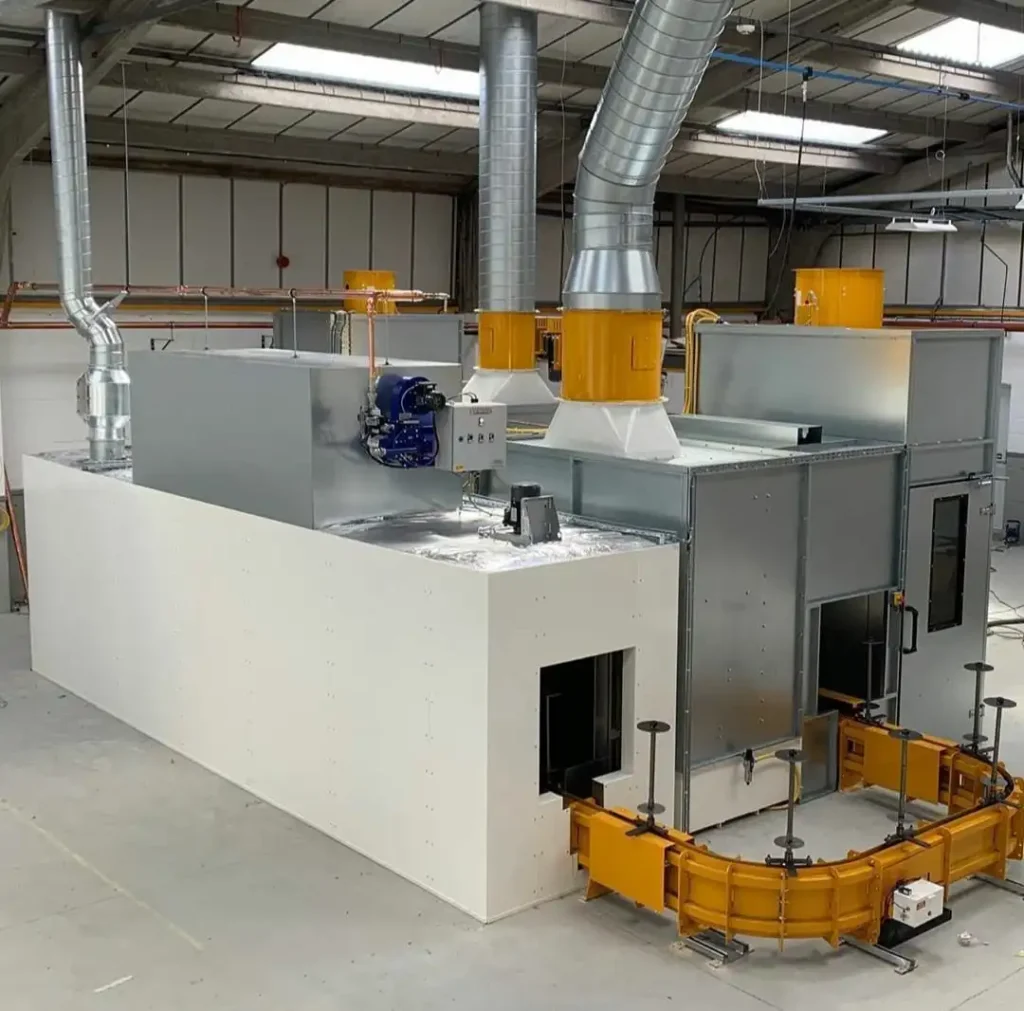News
Technical Advantages of Using a Propane Powder Coating Oven in Large Facilities

Manufacturing facilities with high production demands depend on efficiency and precision at every stage. In large-scale finishing operations, using a propane powder coating oven can dramatically improve turnaround time and energy performance compared to traditional electric systems. These ovens bring the scalability and flexibility that modern production lines need, especially in environments handling bulky or continuous loads.
Enhanced Volumetric Capacity Allowing Larger Racks and Batch Loads
A propane powder coating oven is engineered with expansive internal space, making it ideal for coating oversized assemblies and heavy parts. The larger chamber accommodates taller racks and wider batch configurations, which helps minimize the number of individual cure cycles required. This not only saves time but also ensures consistent finishes across entire product batches.
For facilities managing large powder coating equipment setups, greater volumetric capacity means less movement between curing sessions and more efficient throughput. The increased load volume helps maintain steady production rates while optimizing oven use, reducing idle time between cycles.
Rapid Thermal Ramp-up Reducing Idle Time Before Cure Cycle Begins
One of the major advantages of propane-based systems is their quick heat-up performance. Propane burners deliver direct, consistent heat that allows the oven to reach curing temperature significantly faster than electric alternatives. This rapid thermal ramp-up shortens the waiting period before parts can enter the cure cycle, keeping production lines moving efficiently. Faster preheating also minimizes energy waste by reducing the amount of time the system operates at non-productive temperatures. In high-output facilities, this capability can save hours each day, leading to improved operational efficiency and lower overall costs per batch.
Robust Burner Systems Delivering High BTU Throughput for Dense Parts
Propane systems provide exceptional BTU output, which is essential for curing dense or thick metal components. High BTU burners penetrate heat deeply and evenly, ensuring that every section of a part reaches the required curing temperature. This ability is particularly valuable for manufacturers working with steel, aluminum, or heavy fabricated parts.
The consistent energy flow from propane burners maintains optimal curing profiles even under heavy loading conditions. For operators using industrial powder coating equipment, this reliability supports uniform finish quality while preventing under-curing or surface inconsistencies on complex assemblies.
Superior Airflow Engineering Enabling Uniform Heat Across Oversized Assemblies
Advanced airflow design is one of the defining features of a propane powder coating oven. Balanced air circulation ensures that heat is evenly distributed throughout the chamber, eliminating hot and cold spots that could affect coating adhesion or gloss. This uniformity is vital when curing large items that stretch across multiple air zones.
Facilities that handle long or irregularly shaped parts benefit most from this even heat distribution. The consistent airflow pattern supports precise temperature management, maintaining product quality even during extended runs or mixed batch operations.
Fuel Flexibility Permitting Installations in Facilities Lacking High-voltage Infrastructure
Not all production buildings are equipped with the electrical capacity to support large electric ovens. Propane units solve this issue by offering fuel flexibility that allows installation in facilities without high-voltage lines. This adaptability opens up more layout options, particularly in older or repurposed industrial spaces.
By using propane, operators gain independence from electrical constraints, making expansion or relocation easier. This flexibility is especially practical for manufacturers scaling up operations or setting up temporary finishing lines without investing in costly electrical upgrades.
Lower Per-cycle Energy Expenditure Under Large Continuous Operations
Propane’s combustion efficiency translates to lower energy use per curing cycle. Once heated, the system maintains stable internal temperatures with minimal fuel consumption. For facilities running multiple batches daily, this reduction in per-cycle energy expenditure contributes to significant cost savings over time.
In continuous or high-volume production settings, energy-efficient operation also extends equipment life by reducing strain on heating components. The balance between performance and economy makes propane ovens a smart investment for businesses managing long-term finishing operations.
Greater Tolerance to Ambient Temperature Fluctuations in Expansive Buildings
Large facilities often struggle with temperature shifts caused by open bays, high ceilings, or seasonal changes. Propane ovens maintain consistent curing performance despite these fluctuations. Their combustion-driven heat source adapts quickly to external temperature variations, keeping the interior environment steady.
This stability prevents uneven curing results that can occur in facilities where ambient air affects oven intake. Operators using propane powder coating ovens experience fewer quality issues tied to temperature swings, improving the overall reliability of their finishing process.
Streamlined Integration with Heavy-duty Conveyors and Monorail Systems
In facilities using automated powder coating equipment, seamless integration between ovens and conveyors is vital. Propane ovens are built with high structural strength and adaptable entry and exit points that align easily with heavy-duty monorail or conveyor systems. This integration allows for smooth transitions between coating, curing, and cooling stations.
The compatibility with automation not only boosts productivity but also enhances worker safety by minimizing manual handling. Large-scale producers benefit from reduced loading times and consistent workflow rhythm.
